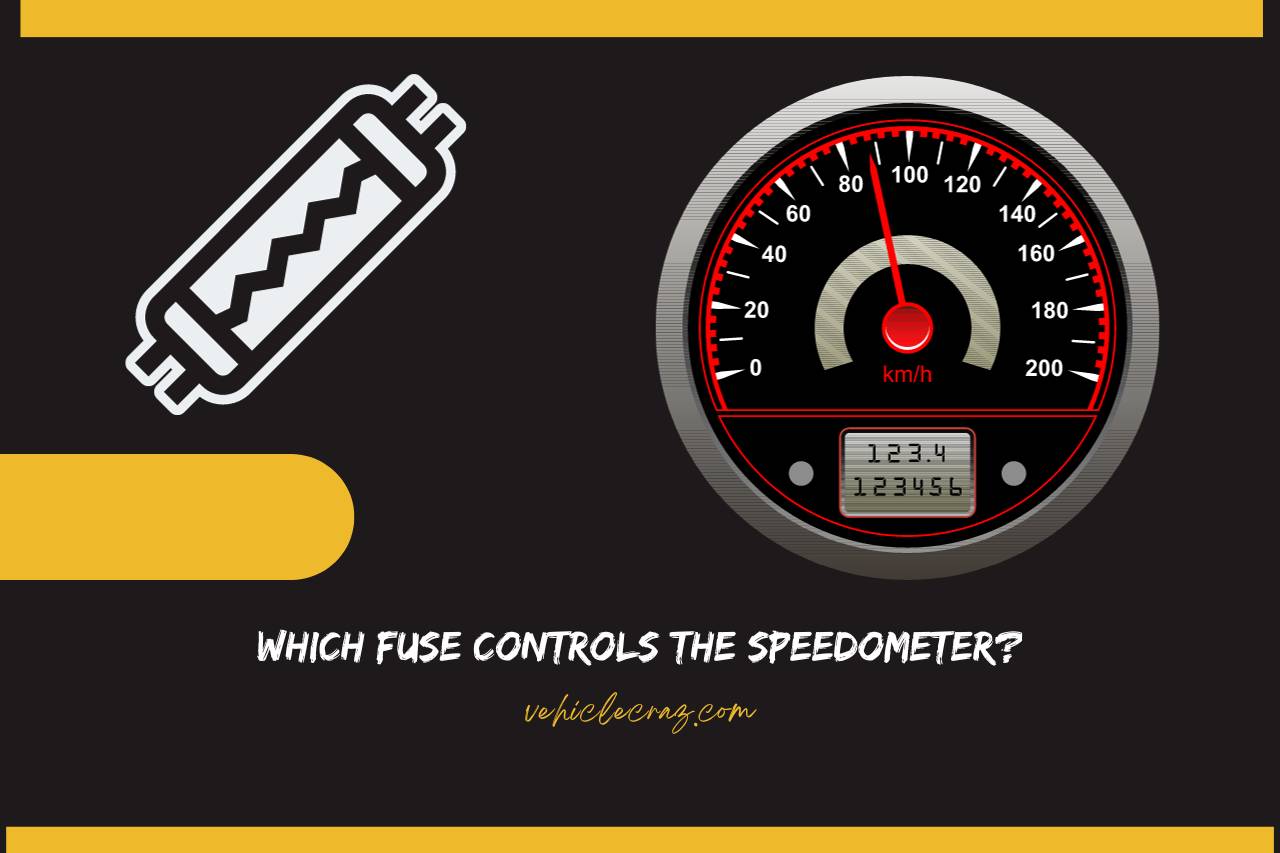Which Fuse Controls the Speedometer? locating + Replacing
Curious about your speedometer? Wondering which fuse controls the speedometer? This guide specifically talks about the speedometer fuse, where it is located and much more important info. Let’s start!
Which Fuse Controls the Speedometer in My Car?
In your car, the speedometer is typically controlled by a specific fuse called instrument cluster fuse. Locate the fuse box, often found under the dashboard or in the engine compartment. It is usually labeled as “Speedometer” or “Instrument Cluster.”
If the speedometer is malfunctioning, check this fuse for any signs of damage or burning. If the fuse is blown, replacing it with the correct amp rating can often resolve speedometer issues. However, if problems persist, it may indicate deeper electrical issues, requiring professional inspection.
How to Locate the Speedometer Fuses in Your Vehicle?
To locate the speedometer fuses in your vehicle, start by checking the fuse box. The fuse box is commonly situated under the dashboard or in the engine compartment. Consult your vehicle manual or the fuse box cover for the specific location. Look for fuses labeled “Speedometer” or “Instrument Cluster.”
If unsure, use a test light or multimeter to identify the fuse associated with the instrument cluster. Once found, inspect for any damage or burning. Replace a blown fuse with the correct amp rating. If issues persist, seek professional assistance for a thorough electrical inspection.
Symptoms of a Blown Speedometer Fuse
Common symptoms of a blown speedometer fuse include:
Inactive Speedometer
The most apparent sign is a non-functional speedometer. If your speedometer remains at zero or doesn’t respond to changes in speed, a blown fuse may be the cause.
Inoperable Odometer
A blown fuse can affect the odometer’s functionality, causing it to freeze or stop recording the distance traveled.
Malfunctioning Other Gauges
Other gauges on the instrument cluster, such as the fuel gauge or temperature gauge, may also exhibit irregular behavior when the speedometer fuse is blown.
Dim or Flickering Lights
Dim or flickering dashboard lights, including those illuminating the speedometer, can indicate an electrical issue related to a blown fuse.
Warning Lights
On some vehicles, the malfunction indicator or other warning lights may illuminate when there’s a problem with the instrument cluster, signaling a potentially blown fuse.
How to Replace a Blown Speedometer Fuse?
Replacing a blown speedometer fuse is a straightforward process. Here is how you want to do it.
1st Step – Locate the Fuse Box
Identify the fuse box in your vehicle, commonly found under the dashboard or in the engine compartment.
2nd Step – Consult the Manual
Refer to your vehicle’s manual or the fuse box cover to identify the fuse related to the speedometer. It is usually labeled “Speedometer” or “Instrument Cluster.”
3rd Step – Power Off
Ensure the vehicle is turned off to prevent electrical hazards.
4th Step – Remove the Blown Fuse
Use fuse pliers or tweezers to carefully remove the blown fuse associated with the speedometer.
5th Step – Inspect and Replace
Check the fuse for damage or burning. Replace it with a new fuse of the same amp rating.
6th Step – Power On
Turn on the vehicle and test the speedometer to ensure it’s functioning correctly.
Watch this one,
Video Credits – conquryourfear & do it urself
You May Also Like
- Does Speedometer Measure Average Speed? Exploring Speedometer!
- Can you Add a Digital Speedometer to a Car? (Step-by-Step)
- How to Remove Scratches from Speedometer Lens? Practical How-To!
- How to Calibrate a Speedometer? From Novice to Pro!
- How to Tell If My Car Speedometer is Accurate? Tips to Test!
- Speedometer Not Working – Troubleshooting Your Car!
- Does ABS Sensor Affect Speedometer? Exploring the Connection!
- Why is My Speedometer Jumping? Solving the Mystery!
- Does Tire Size Affect Speedometer? Expert Insights!


I’m Alex, a seasoned mechanical teacher with over 20 years of hands-on experience in Australia. My passion for all things automotive has driven me to establish this blog, aiming to share my wealth of knowledge and expertise with fellow enthusiasts, DIYers, and anyone keen on understanding the mechanics behind the machines we rely on daily.







